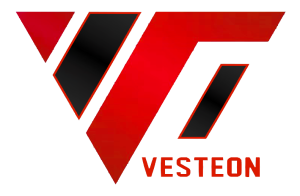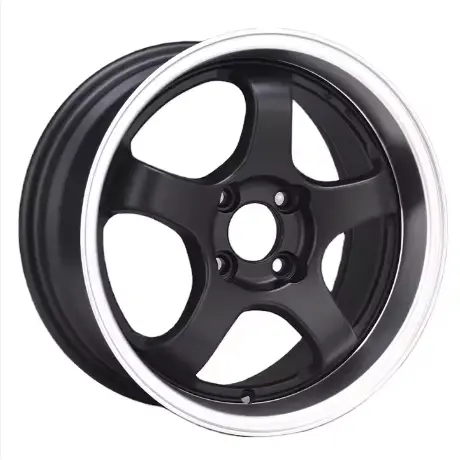Aluminum wheels crafted through casting are well-liked in the sector for their distinct features and advantages. Crafted by pouring melted aluminum into molds to enable patterns and a lightweight build, the casting technique provides design adaptability. That’s why numerous makers, like Vesteon, provide a selection of styles tailored to various vehicles.
Characteristics of Cast Aluminum Wheels
The primary characteristics of cast aluminum wheels include their lightweight nature, durability, and corrosion resistance. They are crafted to withstand various road conditions while maintaining their aesthetic appeal. The use of aluminum also ensures that these wheels have excellent thermal conductivity, aiding in heat dissipation from braking systems.
Advantages of Using Cast Aluminum Wheels
Cast aluminum wheels provide a benefit to vehicle performance as they are lightweight and help improve acceleration efficiency during braking and fuel consumption due to their reduced unsprung weight compared to other materials like steel wheels. Furthermore, they also enhance handling by distributing the load on the vehicle. Moreover, a bonus feature is that cast aluminum wheels can be easily tailored to suit preferences, making them a popular choice among car enthusiasts who seek to add a personal touch to their vehicles.
Vesteon Cast Aluminum Wheels
At Vesteon we offer a range of cast aluminum wheels to suit different car requirements with a strong emphasis placed on quality and creativity in our product design to meet the needs of today’s vehicles while also enhancing their performance and visual appeal. For those looking for OEM wheels, Vesteon guarantees compatibility and dependability across various vehicle makes and models.
Is It Possible to Straighten Cast Aluminum Wheels?
It is feasible to straighten cast aluminum wheels with caution and skill by evaluating the damage extent and ensuring that the repair maintains the wheel’s integrity intact.
Factors Influencing Wheel Damage
Wheel damage can result from causes like hitting potholes or curbs or being in accidents. The extent of damage is influenced by both how hard it was hit and what material was used to make it. Although aluminum is strong, it can still bend if put under a lot of stress.
Assessing the Extent of Damage
Before fixing any issues with cast aluminum wheels, it’s important to assess the damage first to figure out whether straightening them is feasible or opting for replacement is the better option. Pros typically utilize tools to precisely measure any deviations from the wheel’s initial shape.
Looking for top-notch cast aluminum wheels that prioritize durability and performance? Take a look at the variety offered by Vesteon. Known for their high-quality craftsmanship that guarantees lasting and dependable wheels to meet your vehicle requirements.
How Is the Straightening Process Conducted?
Repairing cast aluminum wheels requires attention to detail and skillful handling at every step of the procedure to ensure the wheel’s shape is brought back to its original state while maintaining its structural strength intact.
Preparation for Wheel Straightening
Before beginning any straightening work, is crucial preparation is key, in the process of repairing the wheel carefully cleaning it to get rid of dirt and debris to ensure that any imperfections or damages can be clearly seen and properly evaluated.
Step-by-Step Wheel Straightening Procedure
Straightening a cast aluminum wheel is a process that involves using specific tools and taking great care throughout the procedure.
Initial Assessment and Cleaning
An initial evaluation is carried out to determine the level of damage on the wheel’s surface. This task includes using instruments to measure any discrepancies from the original shape of the wheel. After evaluation, thorough cleaning is done on the wheel to guarantee that no impurities interfere with the repair work.
Heating and Reshaping Techniques
The step of the process involves warming up the impacted section of the wheel gently to make the aluminum more flexible for technicians to delicately mold it back to its initial shape as needed while being mindful not to heat it excessively and risk compromising the metal’s strength.
Cooling and Final Adjustments
Following the reshaping process is crucial for preserving the wheel’s strength and durability as it undergoes gradual cooling afterward to ensure its integrity is maintained intact throughout the procedure. Subsequently, comes the phase of making final adjustments to the wheel to guarantee it is aligned precisely as per its designated specifications. During this step of fine-tuning, adjustments are made accordingly to achieve balance and performance levels for the wheel.
Are There Risks Involved in Straightening Cast Aluminum Wheels?
Dealing with cast aluminum wheels involves risks that need to be recognized and handled by experts.
Potential Issues During the Process
When straightened improperly, there is a chance of causing weakening or cracks. The heating procedure should be managed with care; too much heat may result in metal fatigue or compromise safety regulations. Hence, it is essential that trained technicians undertake this responsibility.
Alternatives to Wheel Straightening
In situations where fixing poses a risk or the damage is severe and extensive, opting for replacement may be a better choice. If you’re looking for alternatives, considering Vesteon cast aluminum wheels could offer solutions customized to meet your specific requirements. These choices guarantee both durability and visual appeal while maintaining safety and performance standards.
To sum it up: fixing cast aluminum wheels can be done, but it needs to be done carefully by skilled experts to minimize risks and guarantee your vehicle’s safety and performance on the road.
How to Maintain Your Cast Aluminum Wheels Post-Straightening?
After fixing your cast aluminum wheels to a position is done, taking good care of them becomes crucial for their durability and efficiency in the long run.
Regular Maintenance Tips
Keeping your cast aluminum wheels in good shape requires regular upkeep to maintain their condition and appearance over time. Start by cleaning the wheels to get rid of road grime, brake dust, and other dirt that can build up. Use a soap and water mix with a soft brush to prevent any scratches on the wheel surface.
Regularly check your wheels for any signs of damage. Wear and pay close attention to areas that have been repaired before since they could be more prone to stress issues. It’s also crucial to monitor tire pressure as insufficient inflation can put strain on the wheels.
Monitoring for Future Damage
To prevent damage to your cast aluminum wheels, you need to watch out for possible road hazards. Try to steer clear of potholes and curbs as much as you can since they often cause damage to wheels. Also, make sure your car’s suspension system is in shape, as worn-out parts can make wheel problems worse.
You might want to think about adding a layer to the wheels to guard them against things, like road salt or bad weather conditions, as it can preserve the wheels’ appearance and stop rust from forming in the long run.
Final Thoughts on Straightening Cast Aluminum Wheels
Fixing cast aluminum wheels can be a good choice if done accurately by experts, but it’s crucial to thoroughly consider the pros and cons before going ahead with this fixing technique.
Making an Informed Decision
Before deciding on whether to repair or replace your cast aluminum wheels. It is important to consider factors such as the level of damage involved, the costs incurred, and the potential safety issues in the run. Seeking advice from a skilled technician can offer valuable guidance on the most suitable approach for your circumstances.
If you’re looking for top-notch substitutes or enhancements for the wheels of your vehicle, Vesteon provides a selection of OEM wheels tailored to cater to automotive requirements. Their dedication to excellence guarantees that you get items that boost both functionality and appearance.
To sum it up, fixing can help improve the function of harmed cast aluminum wheels; however, ongoing upkeep and attentive observation are key in keeping them working well over time. By being well-informed and weighing all choices, you can help uphold the safety and effectiveness of your vehicle’s wheels.


